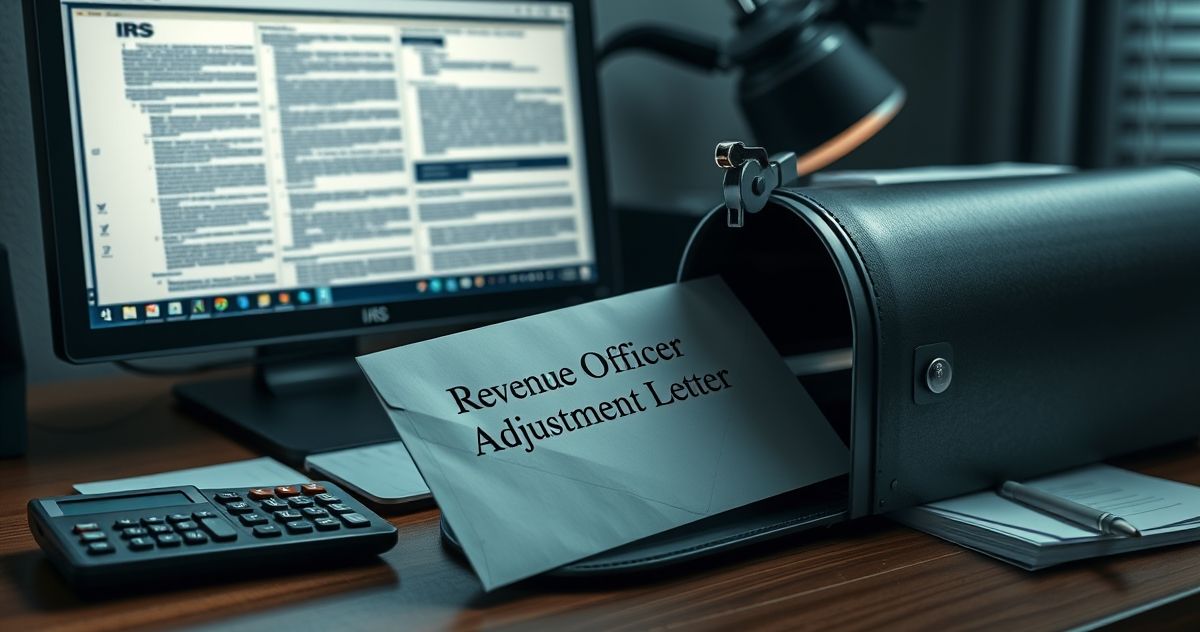Introduction to the Revenue Officer Adjustment Letter
The Revenue Officer Adjustment Letter is a formal communication sent by the Internal Revenue Service (IRS) to inform taxpayers about changes or corrections made to their tax accounts. This letter is vital for those who have discrepancies in their filed tax returns, as it details adjustments made by the IRS after a thorough evaluation. The letter serves as both a correction mechanism and a compliance enforcement tool. Its primary purpose is to notify taxpayers of any discrepancies, inform them of the adjustments, and outline necessary actions required for compliance.
Purpose of the Revenue Officer Adjustment Letter
The primary purpose of the Revenue Officer Adjustment Letter is to correct inaccuracies in previously filed tax returns. When the IRS identifies errors, whether computational mistakes, unreported income, or incorrect deductions, they issue this letter to ensure that taxpayers are aware of the changes. It is an essential tool for maintaining tax compliance and ensuring that taxpayers meet their financial obligations. The letter’s ultimate goal is to adjust the taxpayer’s account to reflect accurate financial information and to prompt necessary corrections or responses from the taxpayer.
Key Features of the Revenue Officer Adjustment Letter
The Revenue Officer Adjustment Letter typically includes several crucial components:
- Explanation of Adjustments: The letter provides detailed information about the changes made, including which items were adjusted and why. This could involve corrections to reported income, credits, or deductions.
- Impact on Your Account: The letter outlines how the adjustments affect the taxpayer’s account balance, such as resulting in additional tax owed or a revised refund amount.
- Compliance Requirements: Instructions for the taxpayer to follow to comply with the outlined changes. This might include paying additional tax owed or disputing the adjustments if there’s disagreement.
- Penalties and Interest: If applicable, the letter will detail any penalties or interest that may be accruing due to underpayment or delayed payments following the adjustments.
Filing and Compliance with Revenue Officer Adjustments
Compliance is critical when dealing with the Revenue Officer Adjustment Letter. Taxpayers are required to verify the adjustments and either comply with the indicated changes or provide evidence that disputes the adjustments. Key compliance steps include:
- Verification: Carefully review the adjustments and compare them with your records. If discrepancies remain, gather all supporting documents to substantiate your original filing.
- Payment of Balances: If there is indeed an additional tax owed, the letter will specify the amount and provide payment instructions to avoid further penalties.
- Dispute Process: If you disagree with the IRS’s changes, you can formally dispute the adjustments by following the instructions provided in the letter. This often requires timely action and appropriate supporting documentation.
Penalties for Non-Compliance
Ignoring or failing to address the Revenue Officer Adjustment Letter can lead to significant penalties and interest. Continuous non-compliance may escalate to enforcement actions, such as levies or liens on assets. Therefore, it’s crucial to address the letter promptly to minimize financial and legal repercussions. Penalties can steadily accumulate, increasing the taxpayer’s financial burden over time.
Importance of the Revenue Officer Adjustment Letter
The Revenue Officer Adjustment Letter plays an essential role in ensuring tax compliance and resolving potential tax debts. It serves as both a notification and an instructional guide for taxpayers to make necessary account adjustments. Timely and accurate responses can prevent the accrual of penalties and interest, reduce financial liabilities, and resolve discrepancies efficiently.
By responding proactively to the Revenue Officer Adjustment Letter, taxpayers can avoid complications, like liens and levies, and ensure that their financial records remain accurate and up-to-date. Furthermore, accurate compliance enhances one’s financial standing with the IRS and can prevent future issues in subsequent tax filings.
In conclusion, understanding and properly responding to the Revenue Officer Adjustment Letter is critical for maintaining tax compliance and avoiding unnecessary complications with the IRS. Taxpayers are advised to take immediate, informed action upon receipt of the letter to secure their financial position and uphold their tax obligations.

